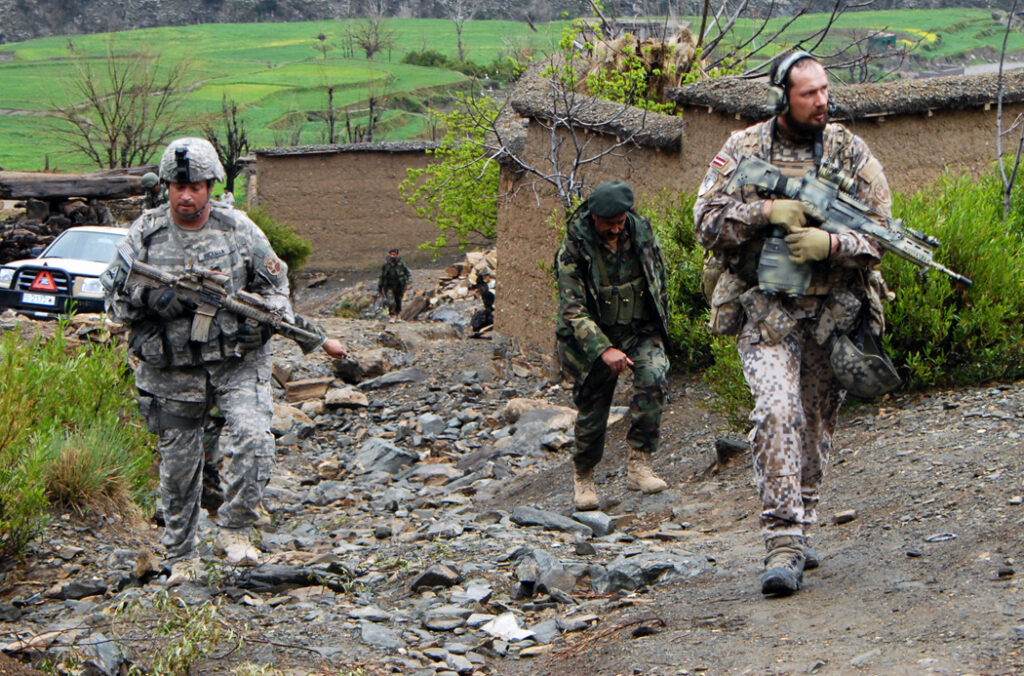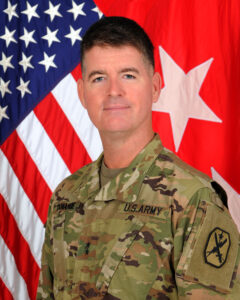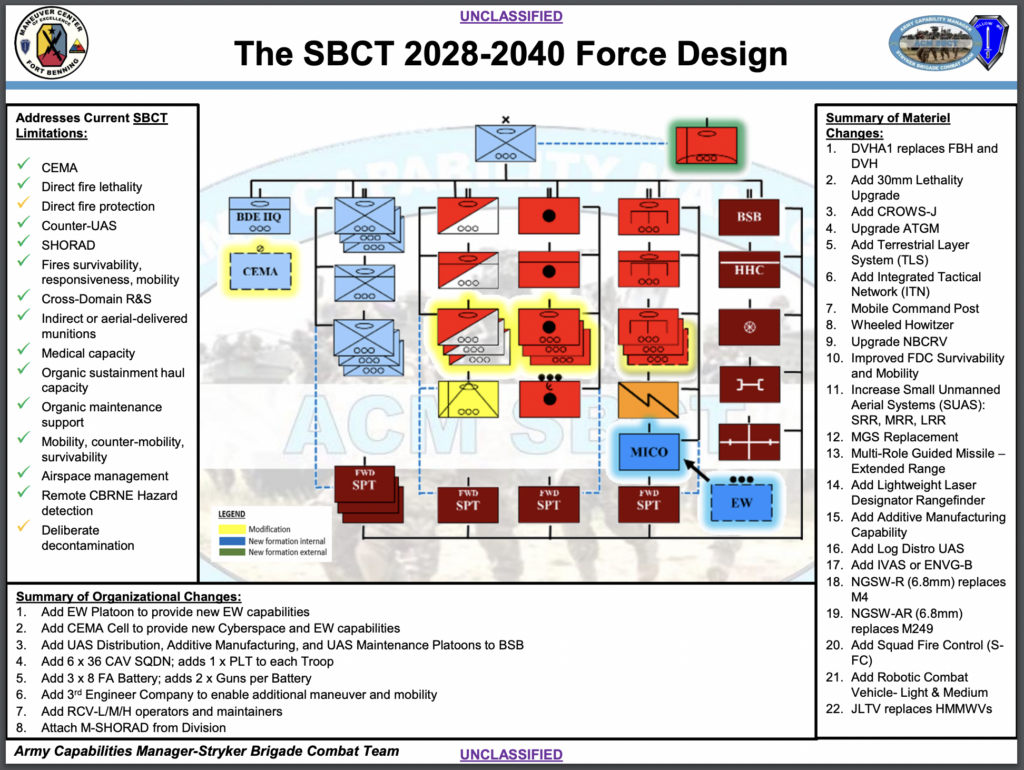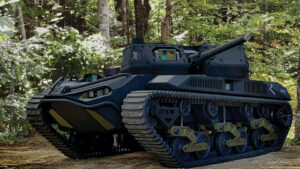
A Michigan National Guard soldier patrols in Afghanistan alongside an Afghan soldier and a Latvian ally. Now the Army is struggling to refocus on defending allies like Latvia against great-power threats such as Russia.
WASHINGTON: The Army is still struggling to reorient itself on great power threats, said the commander of the infantry and armor training center at Fort Benning.

Maj. Gen. Patrick Donahoe
After two decades of counterinsurgency in Afghanistan and Iraq, “we’ve got to get east of the Vistula and north of the Han,” said Maj. Gen. Patrick Donahoe, referring to rivers in eastern Poland and central Korea respectively. “We have to get onto the map sheets where our near-peer competitors may operate against us – and, therefore, we’ve got to take our own trainers out of what they’re comfortable with, [i.e.] the Middle East map sheet of your choice.
“As we as we make that transition in our training, we really have to have a cognitive disconnect with our own experience” of the past two decades, Donahoe told a Fort Benning industry day on Wednesday.
In other words, the Army has some unlearning to do.
“When you walk around Fort Benning, as I have in the past eight months or so, oftentimes you’ll find that what we are training, and the scenario we’re using, is the cordon and search,” he said. That’s a standard technique in counterinsurgency, especially in urban areas, and after a generation of COIN, he said “it’s the default setting of our sergeants first class and our senior captains, junior majors.”
Training needs to focus on fighting well-armed nation-state militaries instead of irregulars, Donahoe argued. “All too often, you’ll find in our training scenarios, it’s the two guys from a hybrid force with AK-47s and then another guy with an RPG,” he said. “That’s not the threat we need to be training our force against today.”
That doesn’t mean the Army should forget the lessons of counterinsurgency, Donahoe said, just stop focusing on them. “[We] can’t lose and bury what we’ve learned over the past 20 years; we’ve got to maintain that learning,” he said. “We’ve got to maintain our doctrine for that — but now as we develop our new doctrinal manuals, there’s got to be the large scale combat operations focus to that. So we’ve got to look at the vignettes we use for our doctrinal manuals. We’ve got to look at the stories we tell and what’s in the base document, and what’s in the annexes. [The] base document’s got to be large-scale combat operations.”

Proposed additions to the Stryker Brigade Combat Team (SBCT).
Donahoe is overseeing studies of new technologies, tactics, and organizations, ranging from robotics to redesigning current Brigade Combat Teams. One slide presented at the Fort Benning industry day, for instance, talked about adding more electronic warfare, field artillery, reconnaissance, and combat engineer assets to the medium-weight Stryker brigades. The slide also acknowledged that the additions require “equipment and personnel growth that the Army cannot afford without significant manpower and budgetary growth” – something unlikely to happen given post-COVID budget constraints.
Donahoe didn’t give details of the proposed reorganizations, but said they were “exciting” and fruitful. “We’ve got a very, very free hand right now in looking at how best to organize the Brigade Combat Teams of all types,” he said. “We are wrestling with some really interesting designs inside the brigades right now. [It’s] a really rich discussion.”

Textron M5 Ripsaw unmanned mini-tank
One big issue: adding robots and artificial intelligence to every brigade.
“We talk about the impact of unmanned systems inside our ground combat formations,” he said. “That is going to be critical to our ability to expand our awareness of the battlefield, expand our ability to make contact unmanned first” — that is, to have robots stumble into ambushes before humans do.
“Then, when we look at our artificial intelligence capabilities, we’re looking for ways to make better decisions faster …in a very, very complex environment,” Donahoe said. Outthinking the adversary this way is the focus of Fort Benning’s “10x Platoon” experiment and the Army’s new drive for “decision dominance.”
Move over FARA: General Atomics pitching new Gray Eagle version for armed scout mission
General Atomics will also showcase its Mojave demonstrator for the first time during the Army Aviation Association of America conference in Denver, a company spokesman said.


























